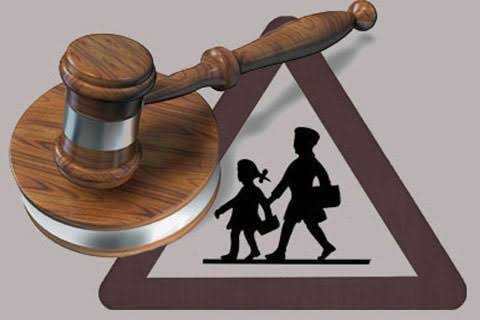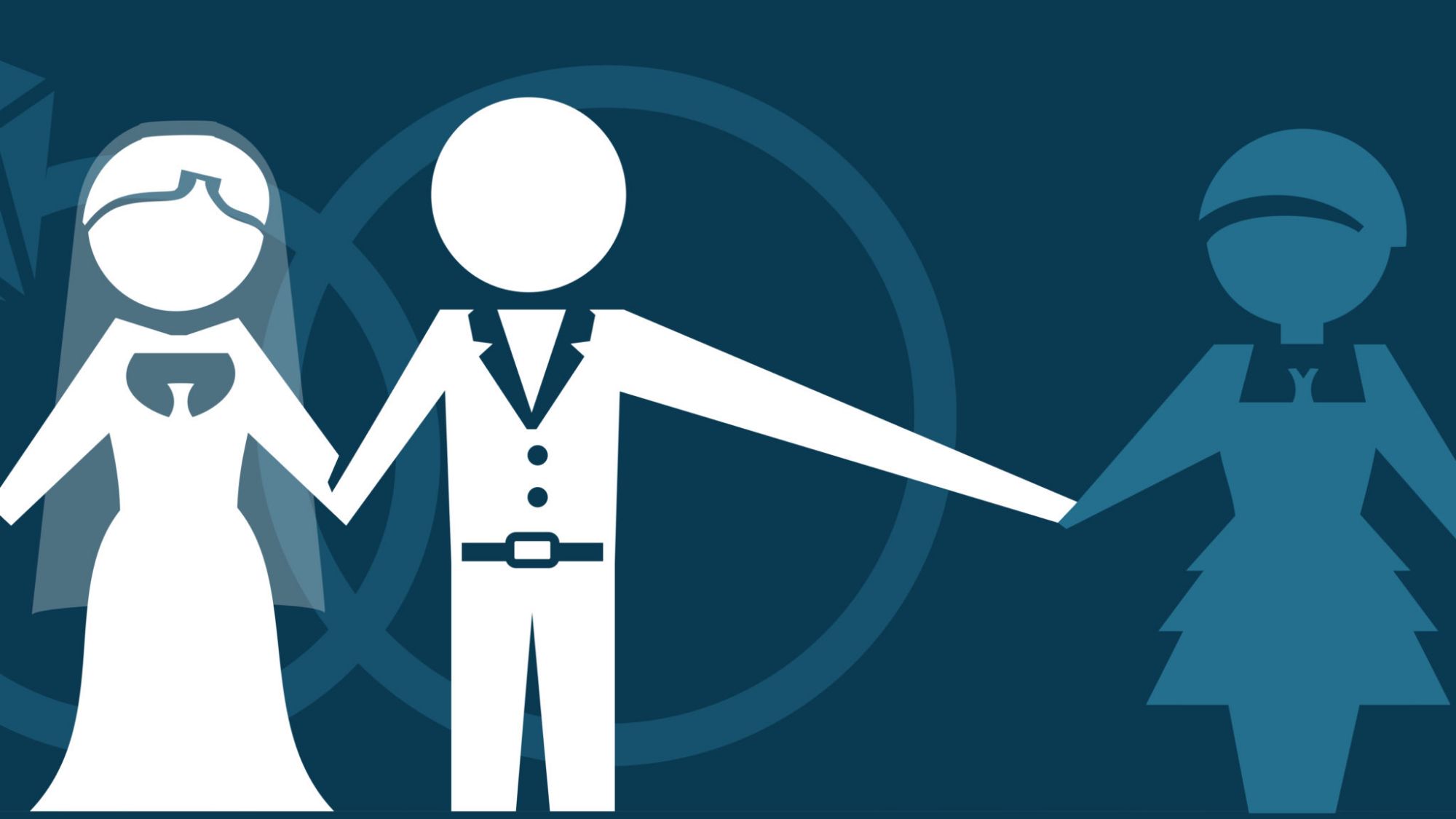Author: Prachi Dixit , a Student of Unity P.G and Law College
ABSTRACT
There is a major pandemic that is mostly concealed from the public: the human epidemic. Human trafficking is a well-known topic, but everyone only knows very little about it. If we delve deeper and examine the fundamentals of this subject, we will learn the essence of how human trafficking exploits human agency. Human trafficking is a serious issue, as there are numerous justifications for it as well as numerous laws and regulations that are designed to prevent it. Many people worldwide unintentionally fall prey to this heinous and illegal behaviour. Although everyone is aware of the topic of human trafficking, knowledge of it is limited to a narrow perspective. As we go deeper into the subject and examine its fundamentals, we learn about the core of this human agency exploitation that results from human trafficking. While there are numerous justifications for human trafficking as well as numerous laws and regulations designed to prevent it, human trafficking is becoming increasingly prevalent. For the victim who falls prey to it, as well as for their loved ones, families, and society at large, it is catastrophic.
It presents a changing challenge to both the legal system and society in the developed world. This horrible practice is a contemporary version of slavery, which is extremely cruel in that it exploits people and degrades them to the point of death. Since the traffickers are also people, this act of exploitation demonstrates how humanity is being destroyed and degraded within people on a daily basis
INTRODUCTION
An epidemic, to put it simply, is a sickness that spreads quickly among individuals. Thus, we can refer to those who engage in fraud and coercion as “traffickers,” and human trafficking is another type of activity that is swiftly increasing among people. Through deceit or improper influence, the traffickers ensnare victims, seize control of them, and subsequently sell them to their intended buyer.
Trading people for one’s own financial gain is a well-known definition of human trafficking. Sexual slavery is the reason behind human trafficking, and it results in unethical business practices. To be extremely disappointed, humans are treated like a commodity, something that they sell and buy themselves.
The global phenomenon of human trafficking is on the rise, despite the numerous legal regulations aimed at curbing this heinous activity.
Human trafficking is still a major problem that requires more attention to be addressed. Human trafficking is a legitimate way for us to witness the daily degradation of mankind, and those who engage in it for personal gain are not held accountable.
A ubiquitous and sneaky crime that affects people of all ages, genders, and origins, human trafficking persists in afflicting countries across the globe. Organ trafficking, forced labour, sexual exploitation, and other forms of coercion for financial gain are all included in this contemporary form of slavery. Human trafficking continues to be a complicated and diverse problem in spite of strong attempts to stop it. A thorough grasp of its dynamics, underlying causes, and effects on victims and communities is necessary.
BACKGROUND
The heinous crime of human trafficking has a lengthy history. Its roots are found in the past in the forms of exploitation and slavery. Human trafficking as we know it now began with the transatlantic slave trade and colonial periods. This offense includes coercing someone into sexual slavery, work, or other forms of forced labour.
The 19th century saw an increase in the trafficking of people, particularly in prostitution-related fields. It has its roots in the history of slavery and has been fostered by imperialist and colonial actions.
Historically, the primary targets of human trafficking on global scale have been women and children but there’s an increasing trend of women being taken advantage of in a variety of industries for financial benefit basic human rights are being violated by this exploitation which also highlights larger problems with power disparities and weakness in society because the term human trafficking is not well defined criminals have been able to profit from uncertainty countries find it difficult to agree on the precise definition of human trafficking due to its complexity and variation it is much harder to understand properly and address this crime in the absence of accurate statistics. We must increase awareness bolster legal protections improve victim assistance collaborate globally and give individuals who are vulnerable more agency in the battle against human trafficking we can put an end to contemporary form of slavery and defend the rights and dignity of every person by learning about the origins and nature of human trafficking.
RECOGNIZING HUMAN TRAFFICKING
Using force, deception, or other forms of compulsion to recruit, transport, transfer, harbour, or receive someone with the intention of exploiting them is known as human trafficking. This kind of exploitation can take many different forms: forced labour in the construction, domestic, agriculture, or manufacturing sectors; sexual exploitation in internet platforms, massage Parlors, and brothels; or organ trafficking for illicit transplantation. In addition to being deprived of their fundamental liberties and rights, victims of human trafficking frequently experience extreme trauma that may have a permanent negative impact on their wellbeing.
IN PRESENT TIME
In present time, most importantly if we talk about India, we get to know that trafficking is punishable offence under Indian penal code,1860. It is stated under section 370, 370A
The Immoral Traffic (Prevention) Act, 1956—which has since undergone amendments—maintains the definition of human trafficking in Indian law. Please be aware that laws might change, thus in order to obtain the most recent information, it is imperative to consult the most recent change and modification without perfectly analysing precent activities.
Human trafficking, as defined by the Immoral Traffic (Prevention) Act, 1956, is the recruiting, transportation, transfer, harbouring, or receipt of individuals for the purpose of exploitation through threats, the use of force or other forms of coercion, abduction, fraud, deception, abuse of power, or inducement. Prostitution, forced labour, slavery, servitude, and organ harvesting are examples of forms of exploitation.
STATASTICS OF HUMAN TRAFFICKING WORLD WIDE
There are measure three well known survey sites which gives the on-point static of every problem that is faced by everyone globally-
These includes: –
International Labour Organization (ILO): ILO estimates that roughly 4.8 million people are ensnared in forced sexual exploitation and that about 25 million people globally are victim of forced labour.
Global Slavery Index: The Walk Free Foundation’s Global Slavery Index offers projections on human trafficking and contemporary slavery. As of the index’s most recent publication, 40 million individuals were thought to be victims of modern slavery in 2016.
The UNODC, or United Nations Office on Drugs and Crime, Global trends and flows in human trafficking are detailed in the UNODC Global Report on Trafficking in Persons. It addresses several types of trafficking, such as forced labour, child trafficking, and sexual exploitation.
ROLE OF HUMAN TRAFFICKING RULES AND PREVENTIONS
Millions of people worldwide are impacted by human trafficking, a serious violation of human rights that has far-reaching social, economic, and moral ramifications. Countries all throughout the world have put laws against human trafficking into place to define, prosecute, and combat the different manifestations of this complex phenomenon. Furthermore, a variety of proactive approaches and recommendations are essential in lowering susceptibilities and minimizing the dangers connected to human trafficking.
It is impossible to overestimate the importance of human trafficking laws in the fight against this horrible crime. These regulations act as a vital cornerstone, providing law enforcement with a framework within which to locate, look into, and prosecute trafficking suspects.
These regulations serve as a deterrence by outlining the harsh penalties for participating in human trafficking. This sends a strong message that trafficking is a serious crime with harsh repercussions. In addition, these legislative measures guarantee victims’ rights and provide access to resources including counselling, shelters, legal aid, and rehabilitation programs.
Apart from the legislative framework, a few crucial recommendations play a major role in preventing human trafficking. Initiatives to raise awareness and educate the public are essential to enabling people and communities to identify the dangers and telltale symptoms of human trafficking. Educational initiatives in communities and schools can increase public knowledge of the risks posed by human traffickers and encourage social responsibility and vigilance.
We can build a united front against this crime by enticing communities to take an active role in stopping trafficking. By addressing the underlying issues that lead people to become victims of human trafficking and establishing a safe haven for those in danger, communities may provide support to groups that are most vulnerable.
When developing preventative and intervention techniques, a victim-cantered approach is essential. Adequate support networks for victims, such as secure lodging, healthcare, therapy, and legal aid, guarantee that those who have survived get the attention they require. Encouraging victims’ participation in prosecuting traffickers and putting their rights and welfare first during the judicial process not only helps victims heal but also helps dismantle trafficking networks.
Since human trafficking frequently crosses national boundaries, international cooperation is essential. Coordinating efforts, exchanging information, and harmonizing legislative frameworks among nations improve the international response to human trafficking. This partnership makes it easier to extradite and prosecute traffickers internationally, denying safe havens to those who prey on the weak.
DEGRADING HUMANITY
The disturbing evidence of humanity’s decline is human trafficking, which tears apart the moral fibre that ought to unite civilizations through compassion, decency, and ethical behaviour. It portrays a bleak world in which people are viewed as commodities and their basic rights and dignity are blatantly violated in the name of business. The extreme cruelty and exploitation inherent in human trafficking expose a deep moral decline that calls into question our common ideals and the very nature of humanity. The occurrence of such a crime indicates a grave failure to preserve the values of justice, equality, and human rights in a world that strives for growth and enlightenment.
Human traffickers take advantage of weak points in order to prey on the disenfranchised and marginalized. In addition to causing physical and psychological harm to those who fall prey to it, this type of contemporary slavery erodes the moral foundation of the communities that tolerate it. Addressing the underlying causes of human trafficking, increasing public awareness, and enforcing strict legal measures are all necessary to combat it. We can only expect to end this scourge on humanity by working together on a worldwide scale, renewing our dedication to justice, compassion, and the inherent worth of every human life. By fighting human trafficking, we recover our common humanity and strive toward a society in which empathy takes the place of exploitation and every person’s intrinsic dignity is upheld.
CONCLUSION
Human trafficking, a covert affliction threatening humanity, manifests as a contemporary slavery, exploiting individuals for financial gain through forced labour, sexual exploitation, and organ trafficking. Rooted in history, this multifaceted crime persists globally, evading comprehensive preventive measures. Recognizing its use of force and deceit to strip individuals of rights and induce trauma is crucial. Urgent actions include heightened awareness, strengthened legal safeguards, enhanced victim support, global cooperation, and empowerment of vulnerable populations. Only through collective efforts can societies eradicate this scourge, protecting human rights and dignity. The call is for a united front against this modern-day slavery, aiming to restore justice, compassion, and the inherent dignity of every human being.
Frequently Asked Questions
1. What is human trafficking?
a) Legal trade of goods
b) Exploitation of individuals through force, fraud, or coercion
c) Voluntary migration for work
d) None of the above
2. Which of the following is NOT a form of exploitation in human trafficking?
a) Forced labour
b) Sexual exploitation
c) Organ trafficking
d) Voluntary employment
3. Who are the primary victims of human trafficking?
a) Men
b) Women and children
c) Elderly
d) None of the above
4. Human trafficking has its roots in:
a) Modern technology
b) History of slavery and colonial practices
c) Globalization
d) Environmental factors
5. Victims of human trafficking often experience:
a) Improved living conditions
b) Severe trauma and long-lasting effects on well-being
c) Enhanced skills and education
d) financial stability
6. In India, human trafficking is defined and criminalized under:
a) Indian Penal Code
b) Immoral Traffic (Prevention) Act, 1956
c) Child Labor (Prohibition and Regulation) Act, 1986
d) None of the above
7. According to the Global Slavery Index, how many people were victims of modern slavery in 2016?
a) 10 million
b) 25 million
c) 40 million
d) 100 million
8. Prevention measures against human trafficking include:
a) Raising awareness and educating the public
b) Supporting vulnerable groups
c) Adopting a victim-centred approach
d) All of the above
9. International cooperation is crucial in combating human trafficking because:
a) Human trafficking often transcends national borders
b) It facilitates the prosecution of traffickers across borders
c) It enhances the global response to human trafficking
d) All of the above
10. Human trafficking reflects the degradation of humanity by:
a) Treating individuals as commodities
b) Violating fundamental rights and dignity for profit
c) Revealing a profound moral decay
d) All of the above
Answer Key:
1. b, 2.d, 3.b, 4.b, 5.b, 6.b, 7.c, 8.d,9. d,10. d




